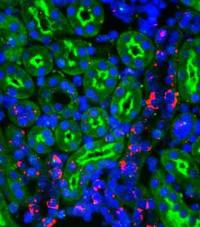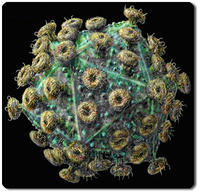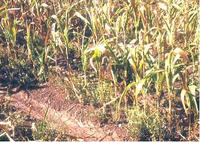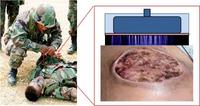-
Detecting botulinum toxin
A company specializing in molecular diagnostic tests based on Single Molecule Array (SiMoA) technology has been awarded a contract from DHS to develop an assay capable of detecting single molecules of botulinum toxin (BoNT) within complex environmental samples
-
-
U.S. unprepared for biological attack
The United States is inadequately prepared to respond to a biological attack and there are several severe weaknesses in its defense capabilities. According to a New York Times investigative report, funding issues, competing agencies with different priorities, and an overall lack of urgency have contributed to a situation where the U.S. lacks countermeasures to combat a number of biological agents that could be used in an attack
-
-
Natural killer cells help human body fight off infections

Researchers have discovered a new type of cell which boosts the human body’s ability to fight off infections and life-threatening diseases; the researchers found a type of cell which recognizes lipid antigens, or foreign molecules, which sit on infectious bacteria which invade the body
-
-
Five years after E.coli outbreak, California farmers still struggling
Farmers in Salinas Valley, California, the “salad bowl of the United States,” are still struggling to regain consumers’ trust five years after spinach grown and bagged on a local farm was linked to a deadly E. coli outbreak that killed three people and sickened 206
-
-
"Left-handed iron corkscrews" a new weapon against superbugs

Scientists have taken inspiration from corkscrew structures found in nature to develop a new weapon in the fight against infections like E-coli and MRSA; researchers have created a new synthetic class of helix-shaped molecules which could be a key tool in the worldwide battle against antibiotic resistance
-
-
New compound breaks down HIV's outer envelope

One of the reasons HIV is so difficult to treat is that it continually evolves the proteins on its membrane to increase its resistance to immune systems; researchers at Texas A&M University and the Scripps Research Institute have now discovered a compound which breaks down the outer envelope of HIV
-
-
Study promises possible therapy for radiation sickness
Studies of potential radiation therapies suggest they would be effective in humans only if administered within a few minutes or hours of radiation exposure, thus making them impractical for use in response to events involving mass casualties; the larger time window for administering a new 2-drug regimen ofeers the prospect that it could become a mainstay of the response to public health threats such as a nuclear power plant accident or nuclear terror attack
-
-
CDC concludes NBA outbreak investigation
A recently concluded investigation by the Centers for Disease Control and Prevention (CDC) reveals that norovirus was the cause of an outbreak that sidelined more than twenty-four NBA players and staff members from thirteen teams in 2010
-
-
Listeriosis outbreak causes 29 deaths, costs producer $150 million
Four outbreak strains of L. monocytogenes, the bacterium that causes listeriosis, were found in twenty-six states, leading to twenty-nine deaths and thirty-three additional illnesses; settlements to the families may cost $150 million; an investigation by the FDA and CDC identify a Colorado cantaloupe producer as the source of the outbreak
-
-
Alien species: a dangerous new bioterrorism threat

Federal counterterrorism officials have a potentially catastrophic new threat to worry about – invasive alien species; the threat is so serious, Lawrence Roberge, an associate professor of anatomy and physiology at Laboure College, warned that terrorists could seek to use invasive species as biological weapons
-
-
Research into bird flu raises bioterrorism fears
In order to stay ahead of H5N1, scientists have been tweaking the virus’s genes in the lab to learn more about how this virus works and what it is capable of; in the process, these scientists made the virus more virulent and more contagious; now, security experts and scientists debate whether or not to make the results of these recent experiments public; security experts say doing so could potentially reveal how to make powerful new bioweapons.
-
-
Schools help spot disease outbreaks early
Local public health authorities in Canada are teaming up with schools to develop an early warning disease tracking system; in an effort to spot potential disease outbreaks before they occur, health officials in Peel, Canada are monitoring school absenteeism and emergency department visits
-
-
Ionized plasmas as cheap sterilizer in tough places

Scientists show that ionized plasmas like those in neon lights and plasma TVs not only can sterilize water, but make it antimicrobial; these plasma devices could be life-savers in developing countries, disaster areas, or on the battlefield where sterile water for medical use is in short supply and expensive to produce
-
-
New plan to fight cholera in Haiti meets resistance
Haiti’s latest attempt to stamp out the cholera epidemic that has ravaged its population is meeting sharp criticism from public health authorities; Haiti’s two most prominent health care organizations plan to deploy hundreds of workers to the country’s remote villages and the impoverished alleys of the capital to administer vaccines
-
-
Jefferson County tests flu pandemic vaccination capabilities
Local public health authorities in Jefferson County, New York are currently testing their ability to administer large quantities of flu vaccines in the event of a pandemic by offering to inoculate its residents for free
-
More headlines
The long view
Ransomware Attacks: Death Threats, Endangered Patients and Millions of Dollars in Damages
A ransomware attack on Change Healthcare, a company that processes 15 billion health care transactions annually and deals with 1 in 3 patient records in the United States, is continuing to cause massive disruptions nearly three weeks later. The incident, which started on February 21, has been called the “most significant cyberattack on the U.S. health care system” by the American Hospital Association. It is just the latest example of an increasing trend.
